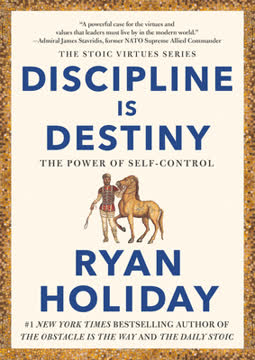Key Takeaways
1. Establish Your "Why" for Meditation
"There's a reason I'm needling you with this particular question. It's because you already live a life with intention, even if you don't realize it."
Conscious intention matters. Understanding your motivation for meditation is crucial for sustaining your practice, especially when faced with challenges. Take time to reflect on your personal reasons for wanting to meditate, whether it's stress reduction, increased self-awareness, or cultivating kindness.
Write down your intention. This simple act can serve as a powerful reminder when you feel discouraged. Your "why" may evolve over time, but having a clear starting point provides a solid foundation. Remember, there's no wrong answer – even curiosity is a valid motivation to begin.
2. Master the Basic Technique of Shamatha Meditation
"Shamatha wakes you up to what is going on in this very moment, through training in paying attention to something that embodies this moment: the breath."
Body, breath, and mind. The shamatha technique involves three key components:
- Body: Sit with a straight spine, relaxed muscles, and eyes open with a soft gaze.
- Breath: Focus your attention on the natural rhythm of your breathing.
- Mind: When thoughts arise, gently label them as "thinking" and return to the breath.
Simplicity is power. This straightforward practice has been used for centuries to cultivate presence and clarity. Don't complicate it – trust in the process of repeatedly bringing your attention back to the breath.
3. Harness Mindfulness and Awareness as Powerful Tools
"Mindfulness and awareness work together to keep us engaged in the present moment. They are the tag team of meditative tools."
Mindfulness is precision. It's the ability to hold your attention on a chosen object, like the breath. Think of it as a drill, precisely focusing your mind on the present moment.
Awareness is perspective. It's the ability to notice when you've become distracted and gently guide your attention back. Like a measuring tape, it helps you gauge how far you've drifted from the present.
Together, these tools help you:
- Recognize distractions
- Return to the present moment
- Cultivate a deeper understanding of your mind
4. Cultivate Consistency in Your Practice
"If you can master these four things then your meditation practice will gradually integrate into your life and have a profound effect on you."
Four pillars of consistency:
- Environment: Create a dedicated meditation space
- Timing: Choose a regular time that works for your schedule
- Duration: Start with a manageable length (e.g., 10 minutes)
- Pacing: Meditate daily for at least 11 days to form a habit
Start small, build momentum. Consistency is more important than length of practice. A short daily session is more beneficial than sporadic longer ones. Make meditation a non-negotiable part of your routine, like brushing your teeth.
5. Embrace Gentleness Towards Yourself
"You can be Gentleness Man or Gentleness Woman. If you have ever said, 'I really ought to be kinder to myself,' you have already had your origin story."
Gentleness is a superpower. It's the antidote to self-aggression and judgment. When you notice yourself being harsh or critical during meditation, choose to respond with kindness instead.
Practical ways to cultivate gentleness:
- Ease into your practice with a cup of tea or gentle stretching
- Use a soft, compassionate tone when labeling thoughts
- Forgive yourself for getting distracted – it's natural and part of the process
- Celebrate small victories in your practice
Remember, gentleness extends beyond the cushion and can transform how you interact with yourself and others in daily life.
6. Overcome the Three Main Obstacles to Meditation
"Laziness, speedy-busyness, and disheartenment will come up for us. As I said before, these are umbrella terms for a myriad of obstacles that might arise."
Recognize and address common challenges:
-
Laziness:
- Manifests as aversion to practice or spacing out
- Antidote: Gentle exertion and remembering your "why"
-
Speedy-Busyness:
- Constantly finding reasons to not meditate
- Antidote: Establish consistency and prioritize practice
-
Disheartenment:
- Feeling like meditation isn't "working"
- Antidote: Reconnect with your intention and trust the gradual process
View these obstacles as opportunities to deepen your practice and understanding of your mind.
7. Work Skillfully with Emotions
"The key way we work with emotions is quite simple: we stay with them, allowing them to pass through us like a cloud across the sky."
Emotions are not enemies. Instead of suppressing or indulging in emotions, learn to be present with them. This approach allows you to respond skillfully rather than react habitually.
Steps for working with emotions:
- Recognize the emotion arising
- Drop the storyline associated with it
- Feel the raw energy of the emotion in your body
- Stay present and curious, allowing it to naturally dissolve
Through consistent practice, you'll develop greater emotional intelligence and resilience both on and off the cushion.
8. Discover Your Innate Peaceful Nature
"Here is the really good news: We are intrinsically buddha, or intrinsically awake, and we are intrinsically good."
You are already complete. Meditation isn't about fixing or improving yourself – it's about uncovering your innate wakefulness and goodness. This peaceful state, often called "buddha nature," is always present, even if temporarily obscured.
Implications of basic goodness:
- You don't need external circumstances for happiness
- Every moment has the potential for peace and contentment
- You can cultivate faith in your own experience of wakefulness
- Recognizing your own goodness allows you to see it in others
As you continue to practice, you'll have more frequent glimpses of this peaceful nature, both in meditation and daily life.
9. Embody the Qualities of a Dharmic Person
"The point here is to see whatever you are doing as an extension of your meditation practice in regard to cultivating mindfulness and awareness."
Seven qualities of a dharmic person:
- Passionlessness: Ability to be with discomfort without needing to fix it
- Contentment: Being okay with who you are
- Preventing too many activities: Simplifying body, speech, and mind
- Good conduct: Working on yourself and benefiting others
- Awareness of the teacher: Connecting with inspiring individuals/communities
- Propagating prajna: Deepening understanding of teachings in daily life
- Attitude of goodness: Expressing confidence in your inherent goodness
Integrate meditation into life. Being a dharmic person means embodying the insights from your practice in everyday situations. It's not about perfection, but about continually aligning your actions with your deepest values and understanding.
10. Relax and Integrate Meditation into Your Life
"You are now ready for the final, really difficult step in your journey to establish a meditation practice: you have to relax."
Relaxation is both the goal and the path. As you've established a consistent practice and worked with various aspects of meditation, the final step is to relax into the process. This doesn't mean becoming complacent, but rather cultivating a sense of ease and trust in your practice.
Ways to relax into your practice:
- Let go of perfectionism and expectations
- Trust in the gradual nature of transformation
- Allow meditation to naturally infuse other areas of your life
- Celebrate your commitment to self-discovery and growth
Remember, meditation is ultimately about becoming more fully yourself. As you continue to practice, you'll find that the line between "meditation" and "life" begins to blur, leading to a more integrated, awake, and authentic way of being.
Last updated:
Review Summary
Sit Like a Buddha is highly praised as an accessible, concise guide to meditation for beginners. Readers appreciate Rinzler's simple, relatable writing style and practical approach. Many found it helpful in starting or reinvigorating their meditation practice. The book offers clear instructions, addresses common obstacles, and emphasizes kindness and self-awareness. Some readers noted its Buddhist perspective, while others found it applicable regardless of spiritual beliefs. Overall, it's recommended for those seeking a straightforward introduction to meditation or support for an existing practice.
Similar Books








Download PDF
Download EPUB
.epub digital book format is ideal for reading ebooks on phones, tablets, and e-readers.







